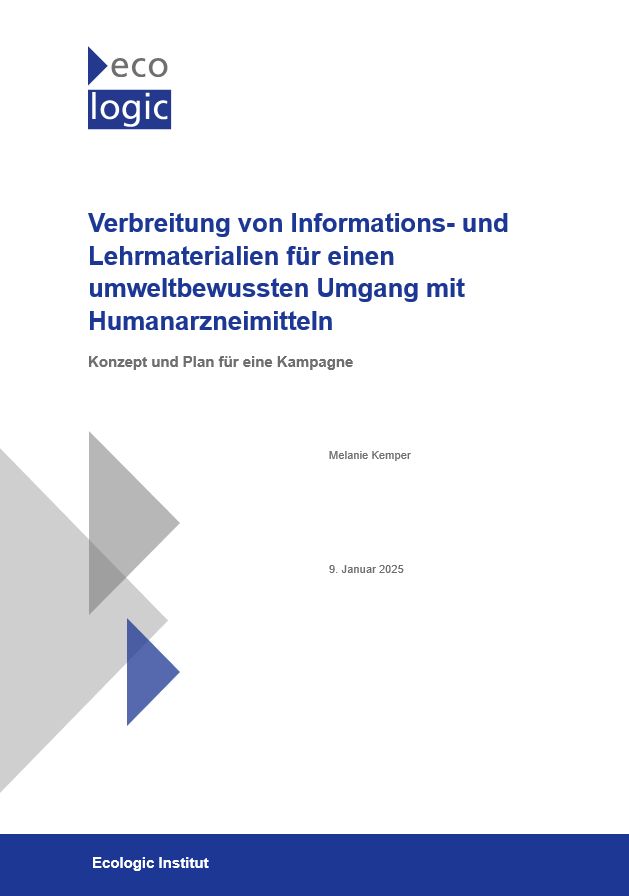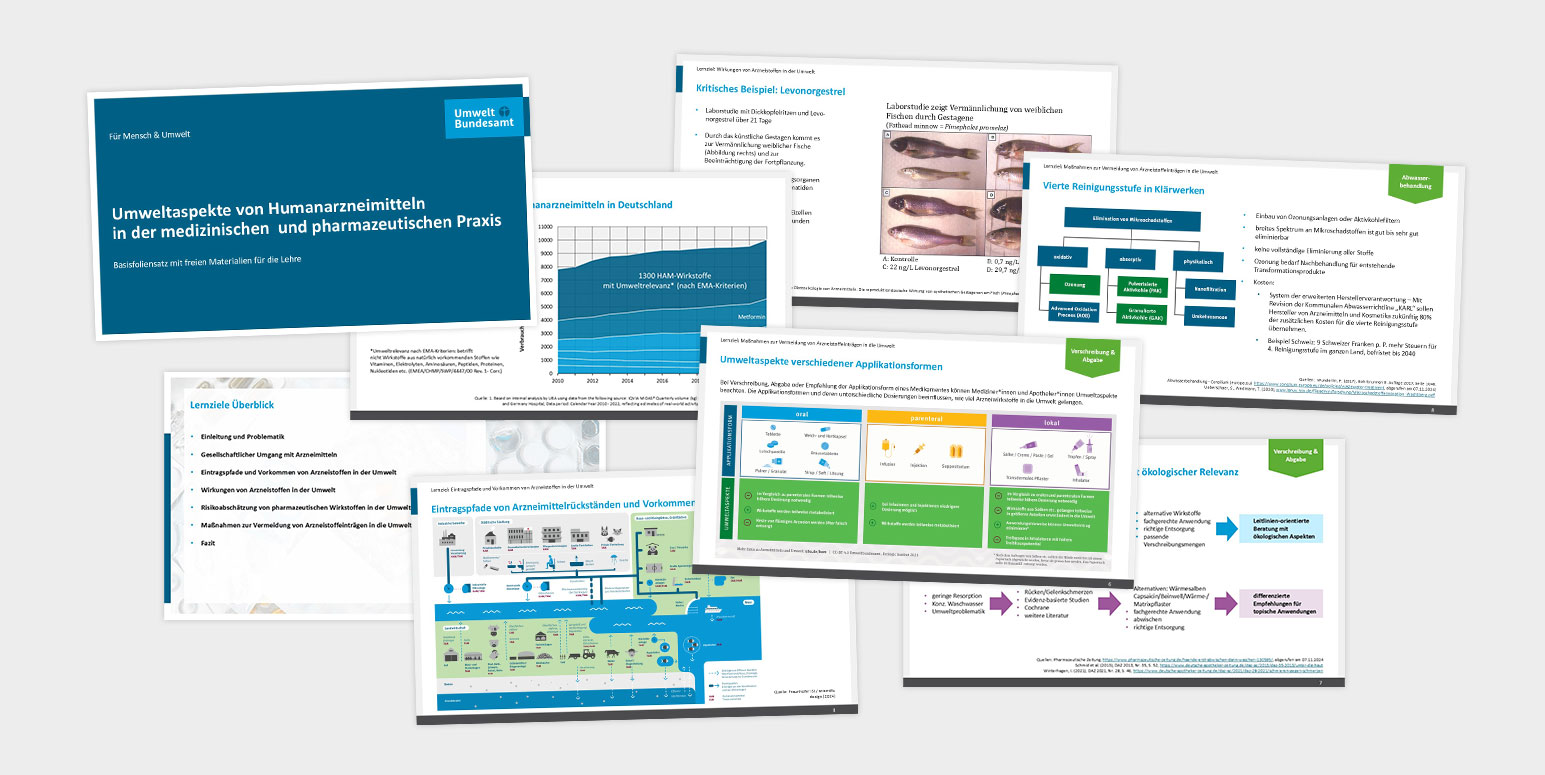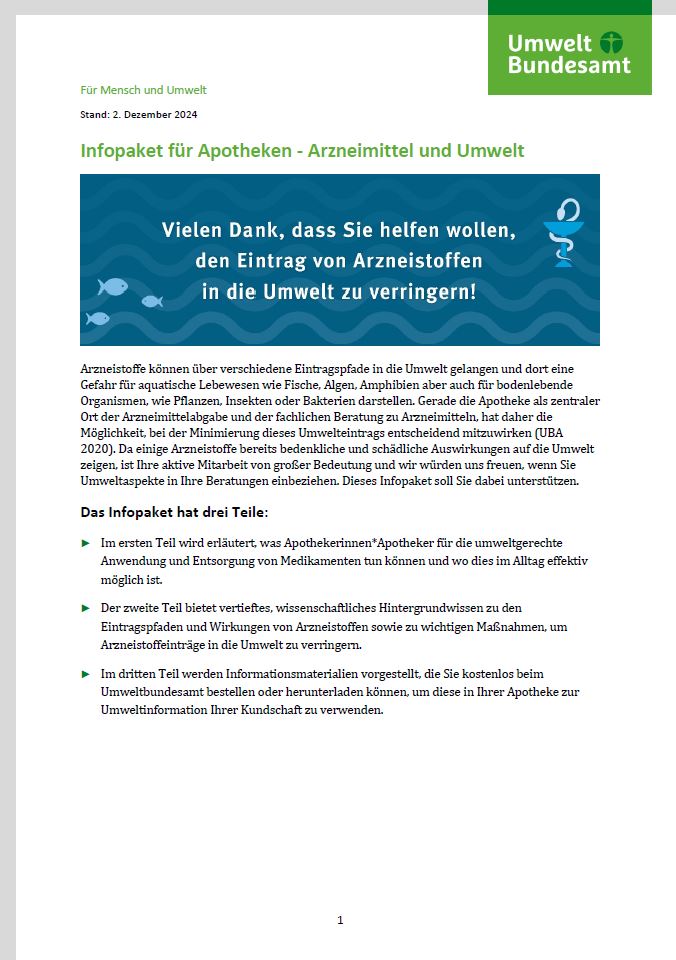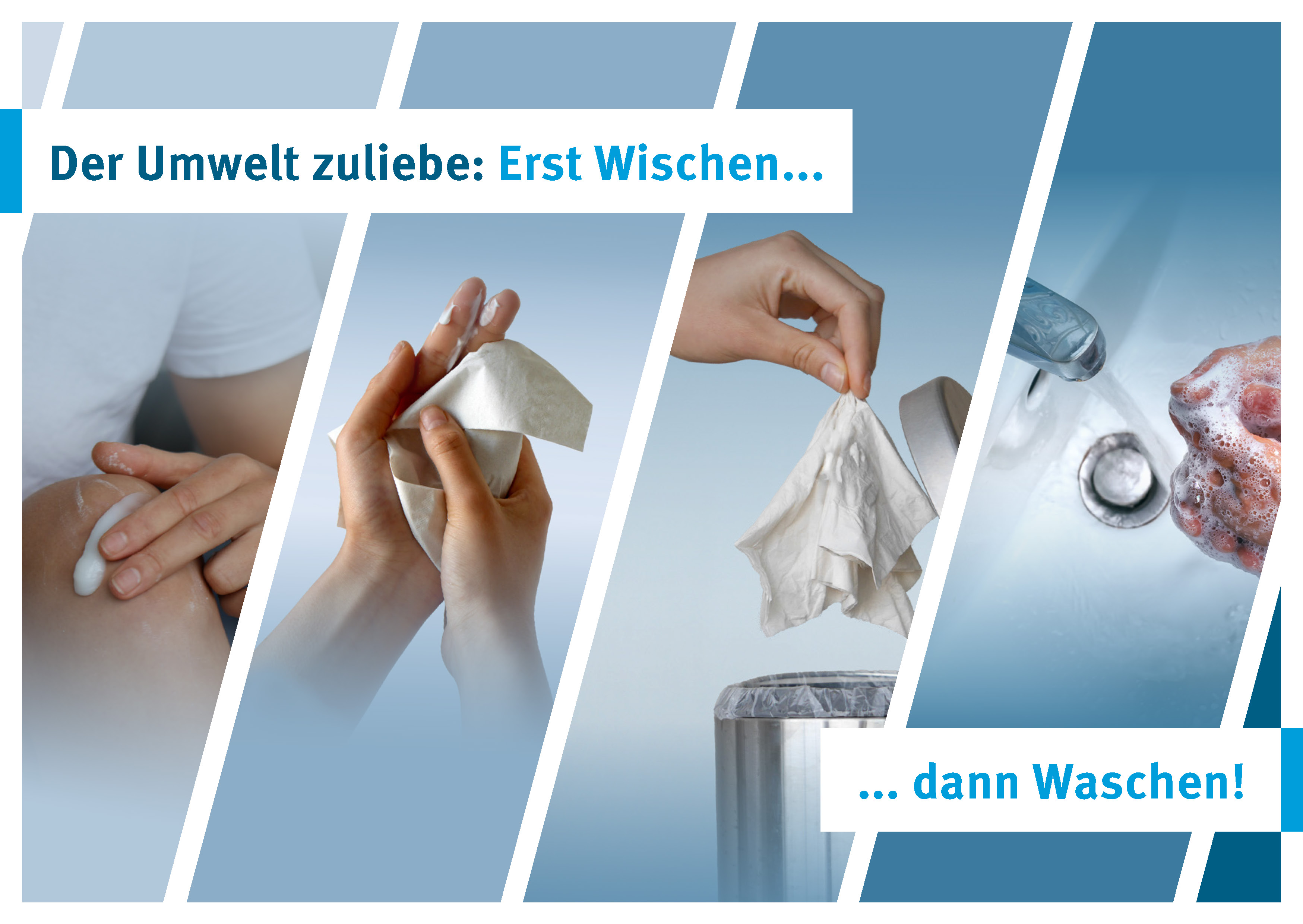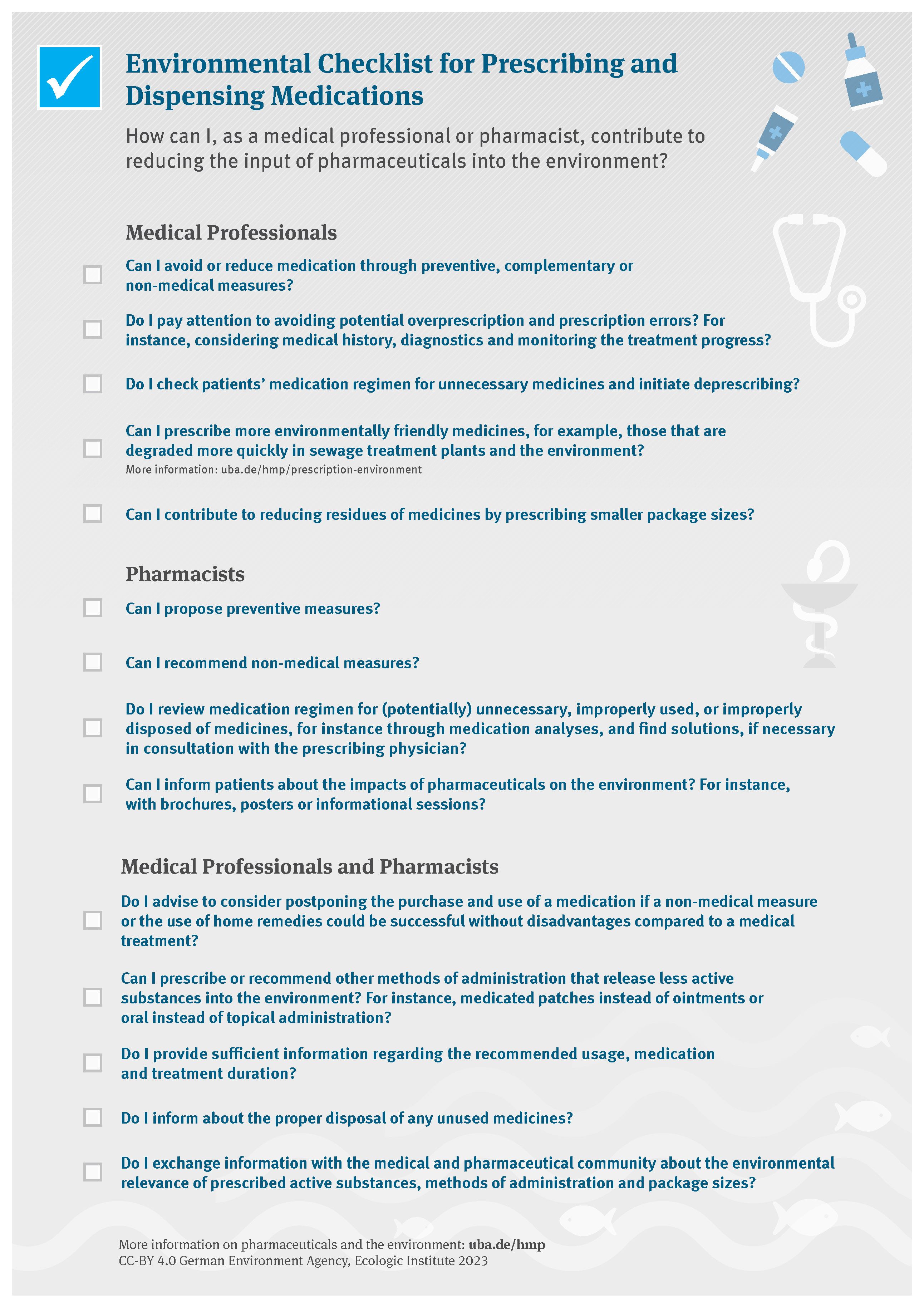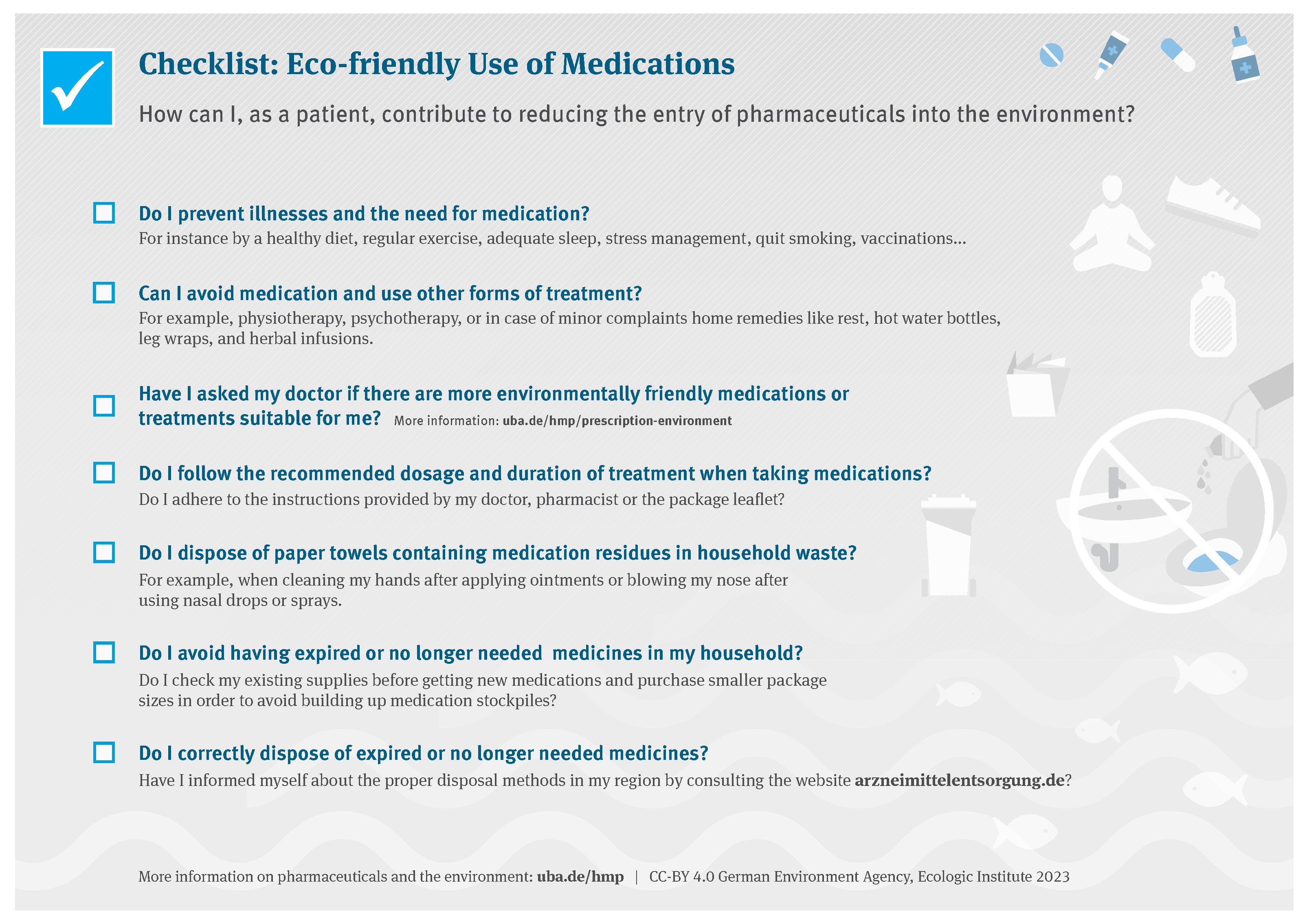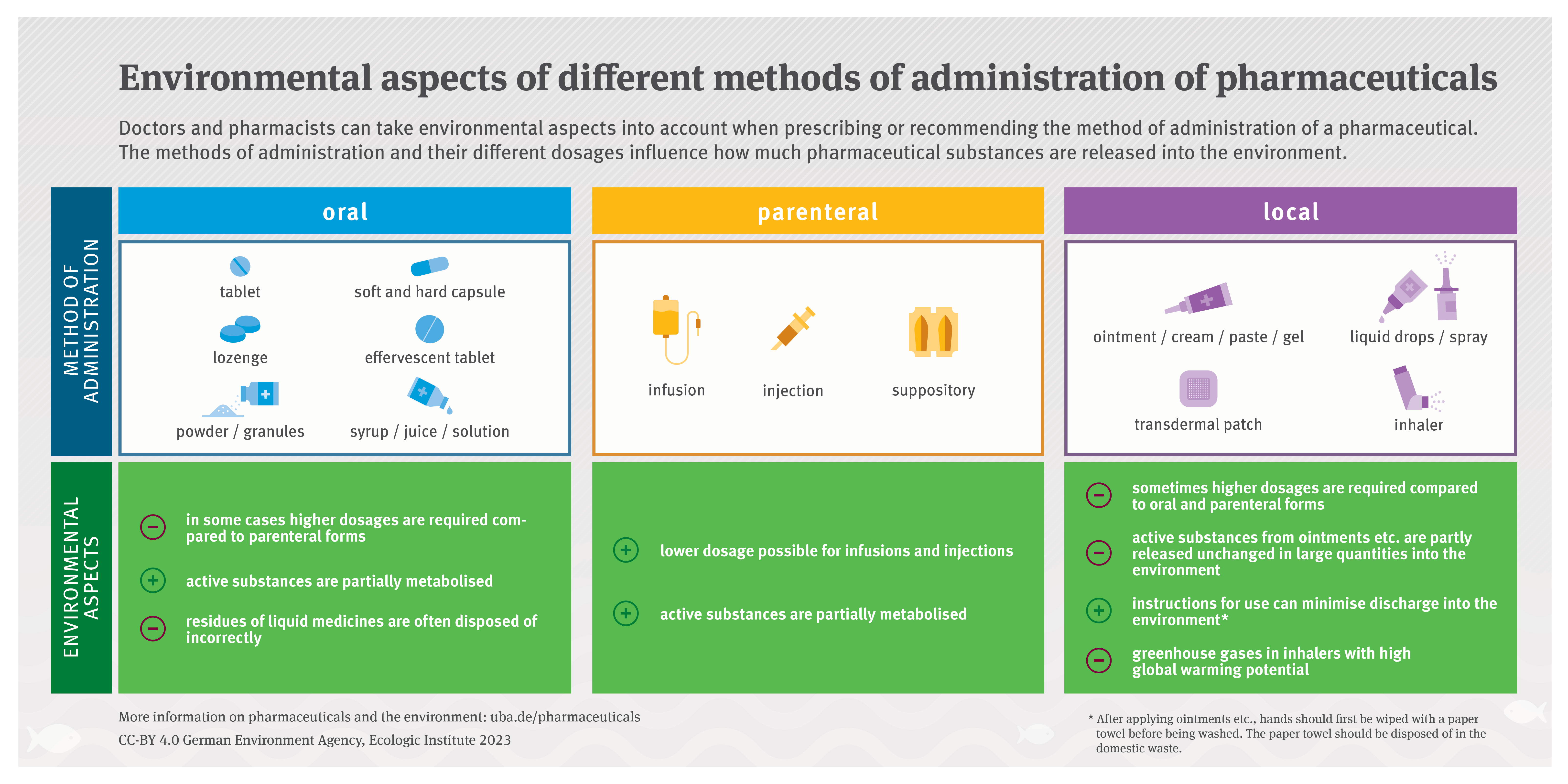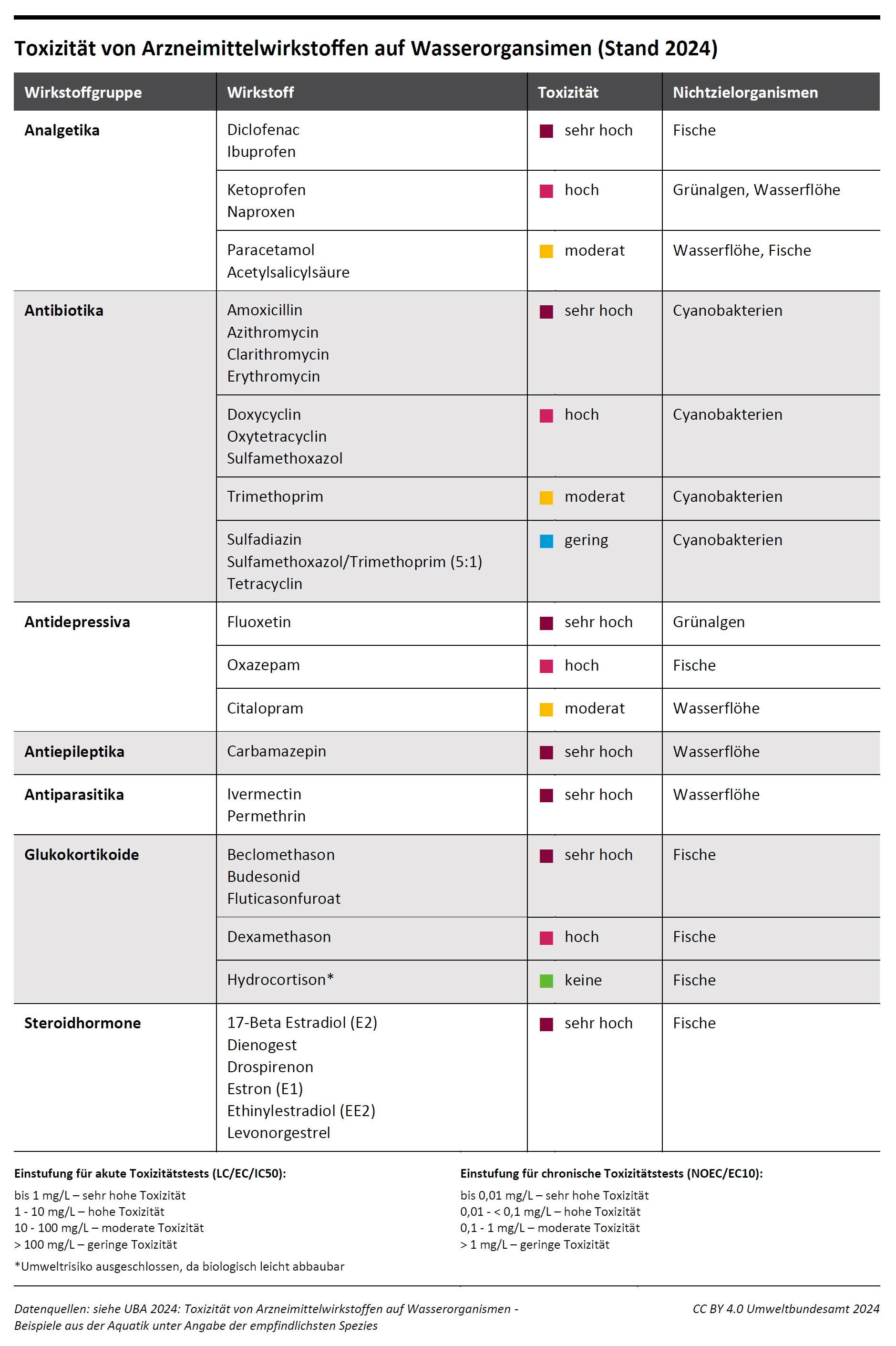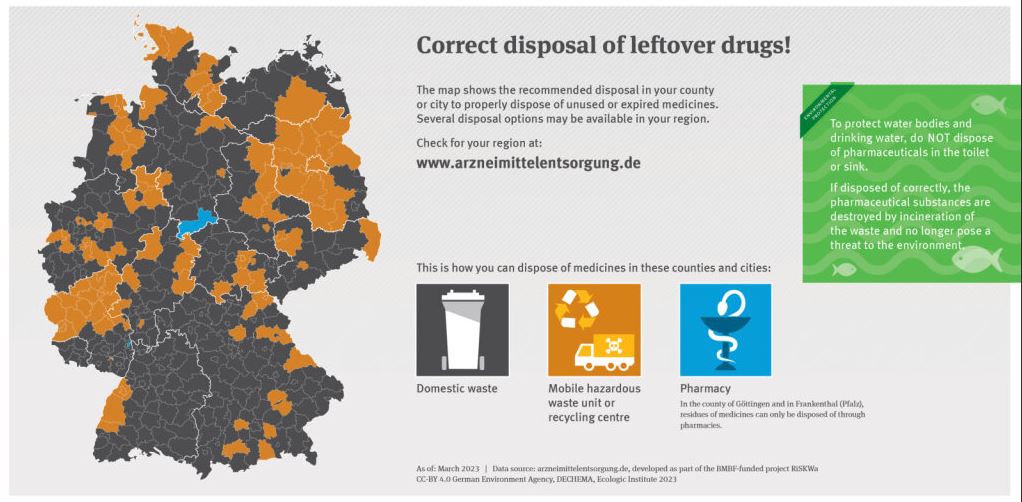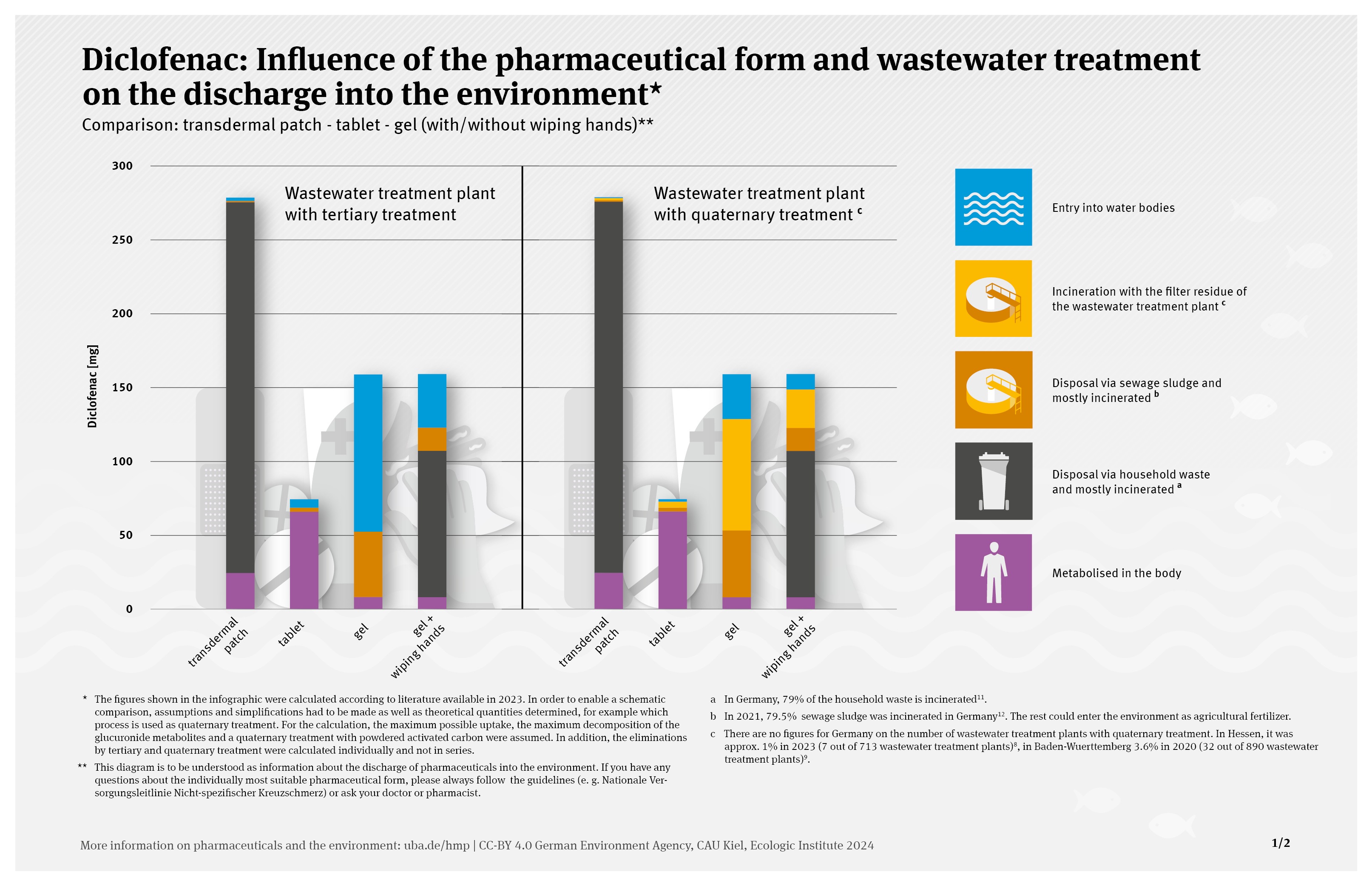
CC-BY 4.0 German Environment Agency, CAU Kiel, Ecologic Institute, 2024
Diclofenac: Influence of the Pharmaceutical Form and Wastewater Treatment on the Discharge into the Environment
- Publication
- Citation
German Environment Agency 2023: Diclofenac: Influence of the Pharmaceutical Form and Wastewater Treatment on the Discharge into the Environment. Online: uba.de/hmp
The analgesic and anti-inflammatory pharmaceutical active ingredient Diclofenac can be administered in various forms of application. The discharge of the active ingredient into wastewater varies depending on the form of application. The final entry into the environment's water bodies is additionally influenced by the type of wastewater treatment.
Diclofenac and its Environmental Impact: Comparison of Application Forms
This infographic uses a color-coded comparative bar chart to illustrate where the active ingredient Diclofenac ultimately ends up for the application forms: patch, tablet, gel, and gel with wiped hands. How much is metabolized by the body? How much is disposed of via household waste? What impact does wiping hands after applying gel and before washing them have? How much remains in the sewage sludge of a wastewater treatment plant with tertiary treatment? How much is retained in the filter residue of a treatment plant with quaternary treatment, and how much eventually ends up in water bodies through the wastewater effluent?
The choice of application form significantly affects how much active ingredient enters the environment. This decision has direct environmental implications, and each individual can contribute to reducing environmental pollution by making informed choices.
Target Audience for the Infographic: Professionals and Educational Institutions
The infographic is aimed at medical and pharmaceutical professionals and is used in the teaching materials developed within the project for university education, further training, and vocational schools. An additional tabular overview provides the data values and sources underlying the bar chart.
The infographic is part of the UBA portal "Human Pharmaceuticals and the Environment". With its CC-BY 4.0 license, it can be shared and modified, provided the author is credited. We encourage you to share this important information with others to raise awareness of the environmentally conscious use of pharmaceuticals.




